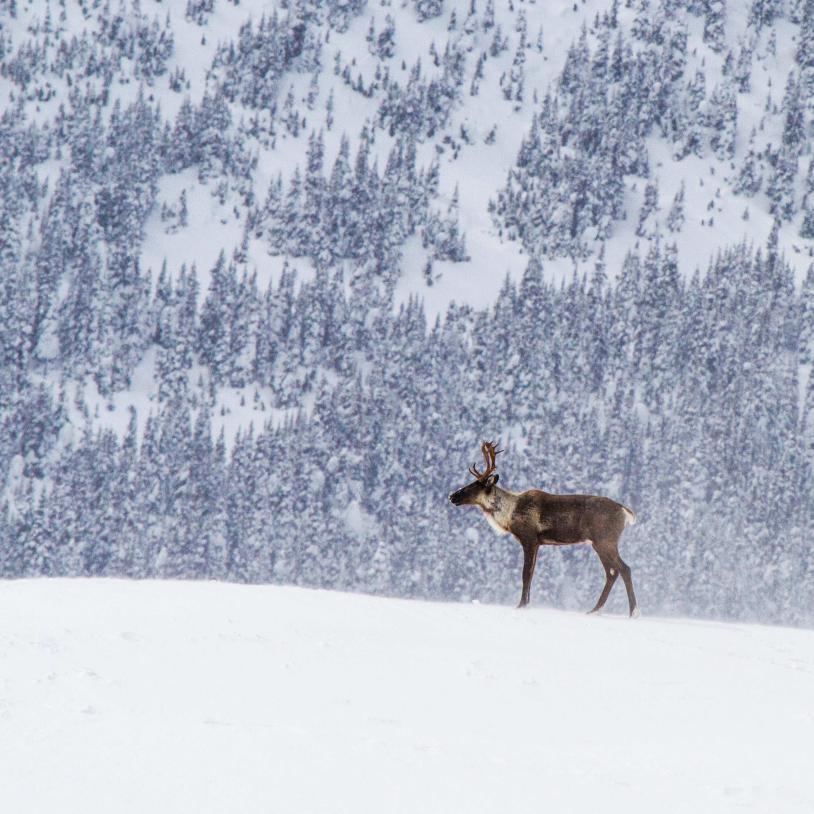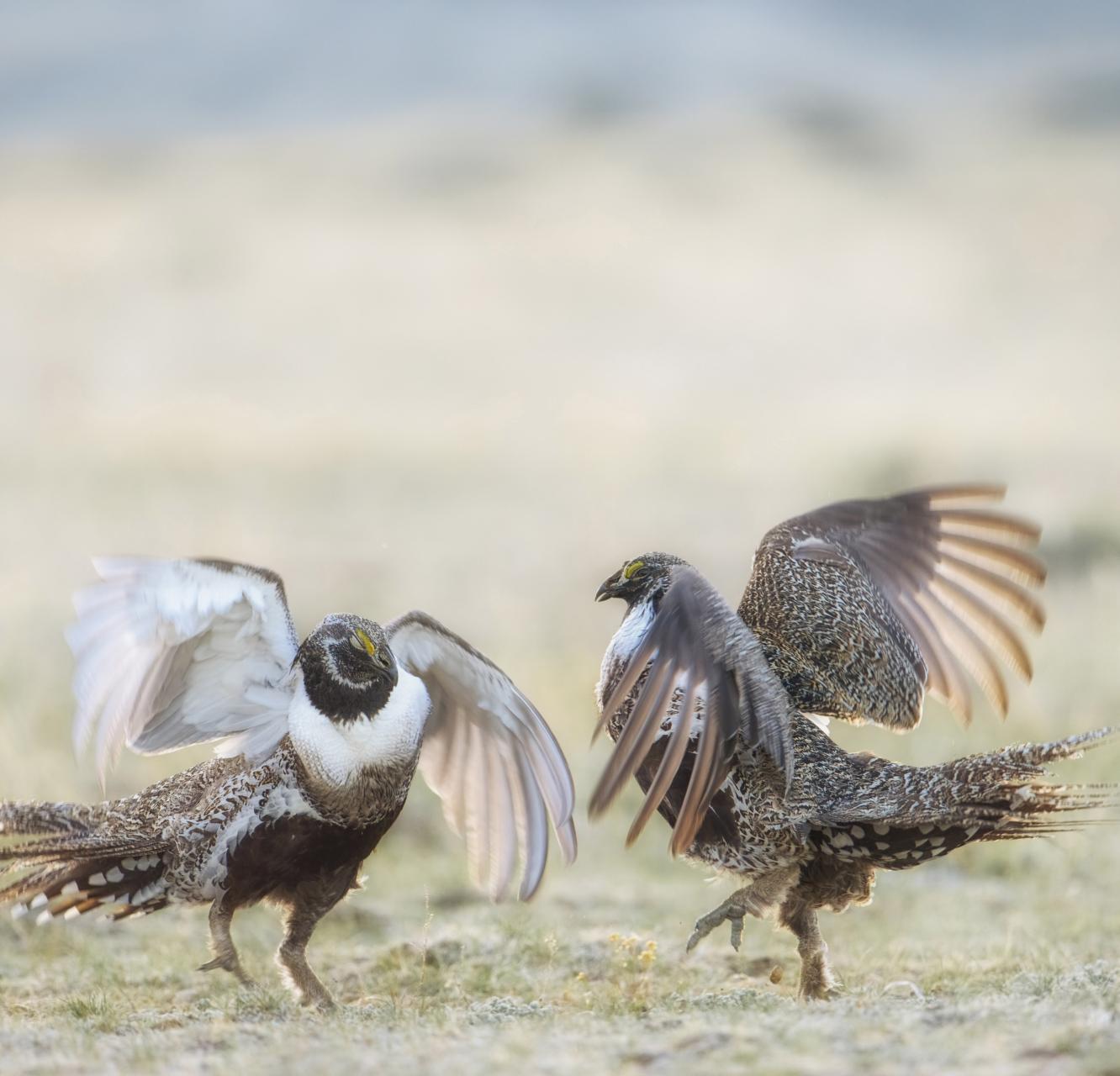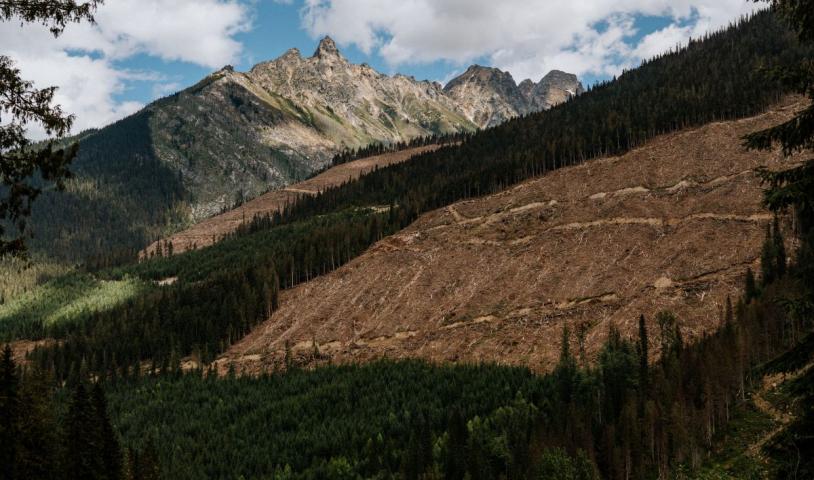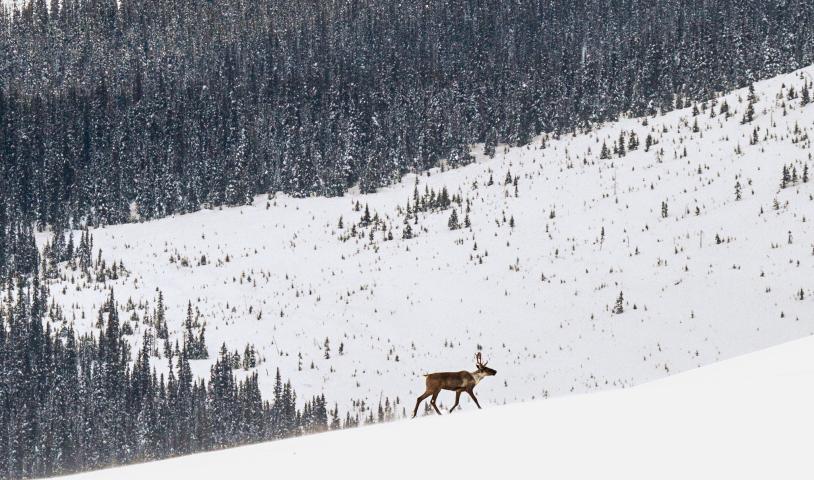Push North for Fish Farms Blocked
Thursday, April 30, 2009Tyee Special Report.
By Sarah K. Cox
March 1, 2006
TheTyee.ca
Strouts Point used to be just another rocky thumb of land along the Skeena River estuary's southern reach. Today, the once innocuous point is the snag in the salmon farming industry's contentious plan to expand to BC's North Coast.
At issue, is a provincial operating license required by fish farming multinational Pan Fish before it can begin open net pen salmon farming at Strouts Point, at the top of Petrel Channel, about 50 kilometers south of Prince Rupert. The Norwegian company expected to receive the license last year, but a wrangle over aboriginal fishing rights now threatens to deal a double blow to both Pan Fish's northern expansion plans and the province's beleaguered salmon farming industry.
Pan Fish, which operates 25 BC salmon farms, has already received federal environmental assessment approval for a Strouts Point fish farm, as well as a provincial site tenure. Two other new Pan Fish farms, about 30 to 35 kilometers south of Strouts Point, have been granted provincial operating licenses and all other approvals. Yet, the two sites remain empty because the company needs a "critical mass" of North Coast farms to make expansion viable, says Pan Fish spokesperson Mark Ayranto. "Once the third one [Strouts Point] is approved, we can look at including that region in our production planning."
Enter the Gitxsan First Nation, the potential hole in the net of Pan Fish's plans to be the first company to farm salmon on the North Coast. Several years ago, Pan Fish negotiated a deal with the Kitkatla First Nation, the "people of the salt", to establish at least ten salmon farms on traditional Kitkatla territory, southwest of Prince Rupert, including at Strouts Point. The Gitxsan, however, hold aboriginal fishing rights to wild salmon that swim through waters around Strouts Point.
100 million smolts
The Gitxsan, "people of the river of mist", have demanded consultation before the Strouts Point operating license is approved, but talks with the provincial government are at an impasse. A February 10 meeting in Vancouver failed to resolve any major issues, says Christine Scotnicki, legal counsel for the Gitxsan Watershed Authorities, which manages the Gitxsan food and commercial fisheries in the Upper Skeena watershed. The Gitxsan say potential disease outbreaks on fish farms could threaten wild salmon and impinge on aboriginal rights to fish in the Skeena River, home to Canada's second largest salmon runs.
Early each June, 100 million sockeye smolts head down the Skeena, milling about in the sheltered inlets of Petrel Channel and elsewhere in the Skeena estuary for approximately six weeks before heading out to sea.
Tyee Articles About Books
"We've done DNA sampling at the Strouts Point site that confirmed the supposition that it is food fish that the Gitxsan rely on that swim by that site," says Scotnicki. "The Gitxsan rely on those fish for up to 86 percent of their food fish needs…The risk of transferable disease may be small, but if something does go wrong, the potential [for damage] could be magnified."
Alaska echoes fears
The Gitxsan's concerns are echoed by the Alaskan government, which has asked BC to stop salmon farms so close to the BC-Alaskan border. (Alaska has banned fish farming in state waters.)
David Bedford, deputy commissioner for Alaska's Department of Fish and Game, points out that sea lice outbreaks at salmon farms in BC's Broughton Archipelago were linked to a precipitous drop in wild pink salmon stocks in 2002. "As we look around the world, we're trying to spot some place where there is both a vibrant and healthy natural population of salmon and a major salmon farming industry and the correlation between those two seems to be negative….We do have very healthy wild salmon runs here [in Alaska] and we have those by virtue of being very cautious stewards of that magnificent resource."
Along with sea lice, a deadly viral disease called infectious hematopoietic necrosis (IHN), widely reported at BC salmon farms, can also easily be transferred to wild salmon that swim by fish farms en route to Alaska, says Bedford. Outbreaks of IHN at BC salmon farms in 2002 led to the culling of millions of fish and caused significant financial losses for the industry. At the time, Pan Fish referred to IHN as the "major biological risk for the salmon farming industry in British Columbia."
Since then, an IHN vaccine has been developed and a provincial sea lice monitoring program implemented. Ayranto says disease "is something we take seriously every minute of every day."
Indeed, BC's salmon farming companies are spending increasing sums of money on medications to treat fish diseases, according to Statistics Canada. In 2004, the companies spent $7 million on therapeutants in BC, including antibiotics and the controversial sea lice medication SLICE. That compares with $5.3 million spent in 2003 and $4.5 million spent in 2002, according to Statistics Canada.
Opposition years in the making
Alaska's other worry, says Bedford, is that escaped, farmed Atlantic salmon could eventually colonize, displacing Pacific salmon and jeopardizing Alaskan salmon runs.
"We have found substantial numbers of those [farmed Atlantic] fish in our waters and we have found some of those fish in our freshwater streams."
The number of salmon that escape from BC farms varies widely from year to year. In 2005, only 48 salmon escaped, compared with 44,000 in 2004, says Andy Thompson, sustainable aquaculture director, Pacific region, for the federal Department of Fisheries and Oceans. Thompson oversees the Atlantic Salmon Watch Program, a federal/provincial initiative which tracks escaped salmon and captures them.
Ayranto, along with others in the salmon farming industry and the provincial government, says the number of escaped Atlantic salmon is too low to pose a threat to Pacific stock, but Bedford points out that "there are few invasive species that colonize the first time they're introduced. It usually takes several introductions before they finally stick."
Opposition to north coast salmon farming has been brewing for years, yet the provincial government only put the Strouts Point operating license on hold after the Gitxsan requested consultations. In 2004, the Skeena-Queen Charlotte Regional District Board voted to ask the federal and provincial governments to halt new salmon farms in their sprawling district bordering Alaska's Inside Passage. During the recent federal election campaign, Skeena-Bulkley Valley riding candidates from every political party, including the Conservative Party, publicly announced their opposition to salmon farming in Northern BC.
North Coast MLA Gary Coons, Skeena MLA Robin Austin and Skeena-Bulkley Valley MP Nathan Cullen are also all opposed to fish farm expansion north. Joining the call for a moratorium on northern salmon farming is the one-year-old group Friends of Wild Salmon, a coalition of environmental groups, businesses, First Nations and individuals.
Sparrow case changes dynamic
The reason for the provincial government's attentive response to the Gitxsan can be summed up in one word: Sparrow. In 1990, in a case called Sparrow, the Supreme Court of Canada ruled that governments do not have the power to interfere unilaterally with existing aboriginal rights-including activities such as hunting and fishing.
The Sparrow case established a framework for addressing what could be justifiable infringement of aboriginal rights and established that government must undertake certain processes to ensure that aboriginal rights are upheld.
Imagine this Kafkaesque scenario for the provincial government. If the Strouts Point operating license were to be granted without consultation with the Gitxsan, and the band launched a court challenge, a favourable ruling for the Gitxsan could set a precedent for the provincial government to consult with all First Nations with aboriginal rights to fish swimming through salmon farm waters. That might effectively halt salmon farm expansion in the province.
Some BC First Nations have partnered with salmon farming multinationals to support farming on their traditional territories, but most nations remain opposed to salmon farming. Of the seven bands that comprise that Tsimshian Tribal Council, for instance, just two-the Kitkatla and Kitasoo bands-support salmon farms. The other five bands in the council, including the Metlakatla and Kitsumkalum bands, are outspoken opponents. The Skeena Native Development Society, representing economic development initiatives by First Nations throughout the Skeena watershed, is also against open-net pen salmon farming.
Provincial licenses expire
In another twist, the Strouts Point operating license has been held up for so long that provincial operating licenses for Pan Fish's other two North Coast sites have expired. The license for Anger Anchorage expired last December, while the Petrel Point license expired February 16.
Ayranto says he expects renewals to be only a formality. To complicate matters further, however, other upstream First Nations, including the Gitanyow Hereditary Chiefs, have recently indicated they also want to be consulted about approvals for any North Coast salmon farms, says Scotnicki.
The Strouts Point impasse comes at a difficult moment for BC's salmon farming industry. In 2004, BC farmed salmon production and value fell for the second year in a row, according to Statistics Canada. Lower prices for farmed salmon, as a result of increased international competition and a stronger Canadian dollar, were cited as contributing factors.
Challenging conditions have sparked further consolidation in an industry already dominated by only a handful of players. Two years ago, five multinationals operated 80 percent of BC's 129 marine salmon farm sites. Today, just three multinational companies, including Pan Fish, operate most of BC's marine salmon farm sites. Total salaries and wages in BC's farmed salmon industry, too, have fallen -- from $48 million in 2002 to $41 million in 2004, according to Statistics Canada.
Studies underway
The BC government, in response to growing public concern about open-net pen salmon farming, has established a Special Committee on Sustainable Aquaculture. Chaired by Skeena New Democratic MLA Robin Austin, the commission is due to report back in mid-2007.
In the meantime, the Pacific Salmon Commission, a body formed by the Canadian and US governments to implement the Pacific Salmon Treaty, is also taking a keen interest in the issue of North Coast salmon farming. In 2004 and 2005, the commission spent a total of almost $200,000 for baseline habitat studies of near shore areas in Northern BC, according to Angus Mackay, the commission's fund coordinator for finance and administration.
Bedford says the studies will be used to measure the impact of salmon farming on wild stock if Pan Fish gets the provincial nod for its northern expansion. The purpose, he says, is to avoid "the paucity of information that have in the Broughton Archipelago. The problem there is that you can't tell what changed because you didn't know what was there in the first place."
Jeremy Berry, spokesperson for the BC Ministry of Agriculture and Lands, says consultations with the Gitxsan will continue.



